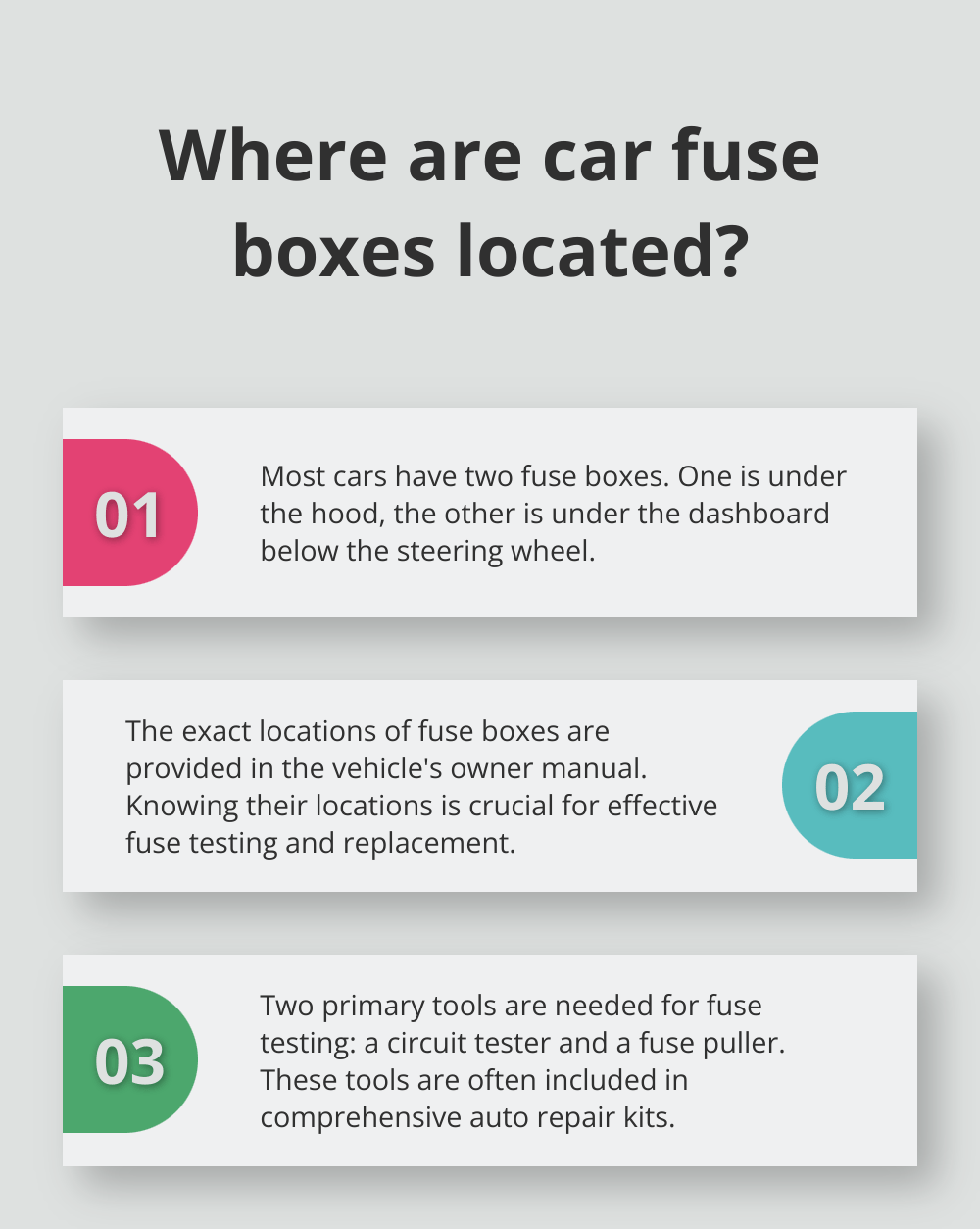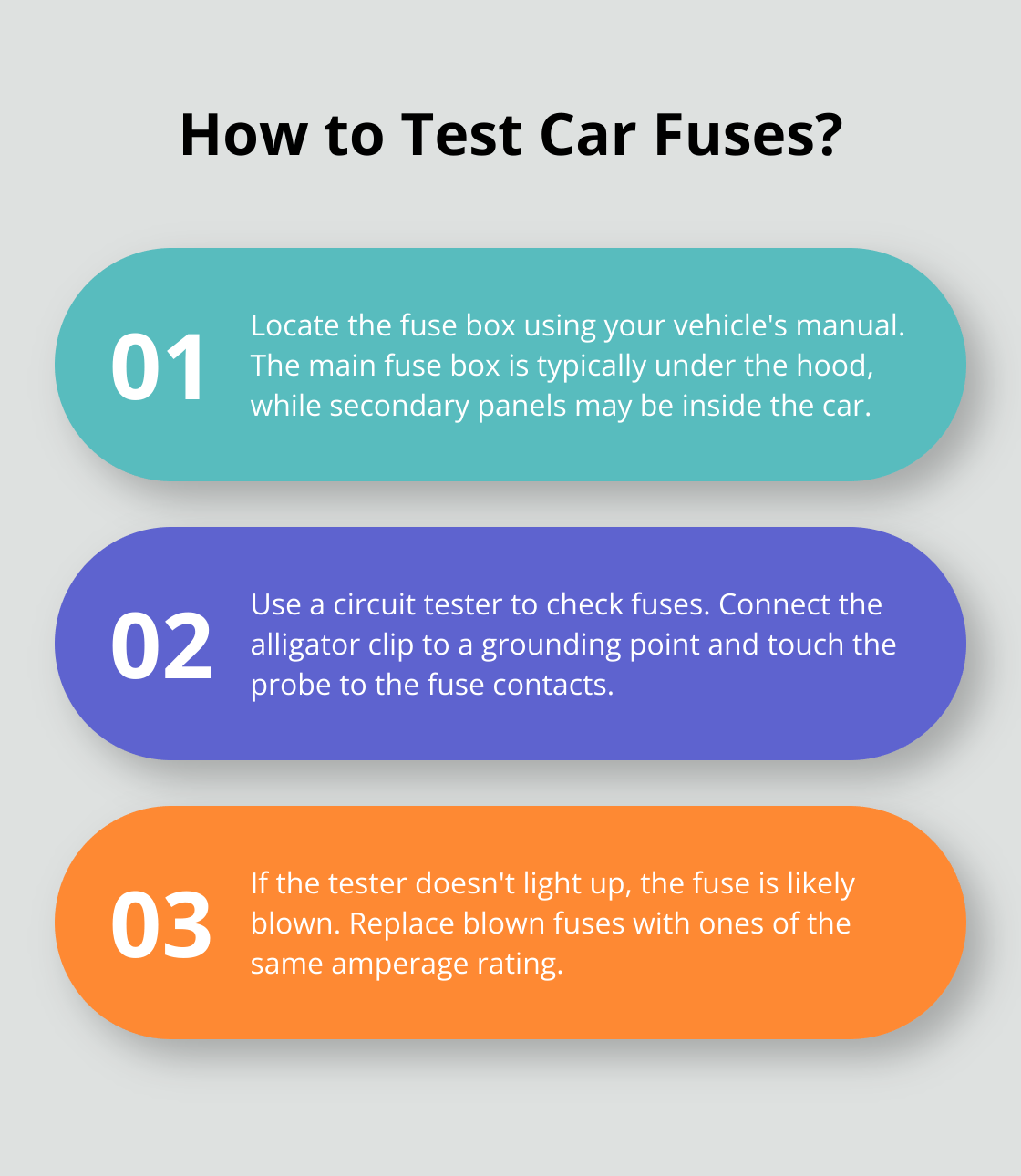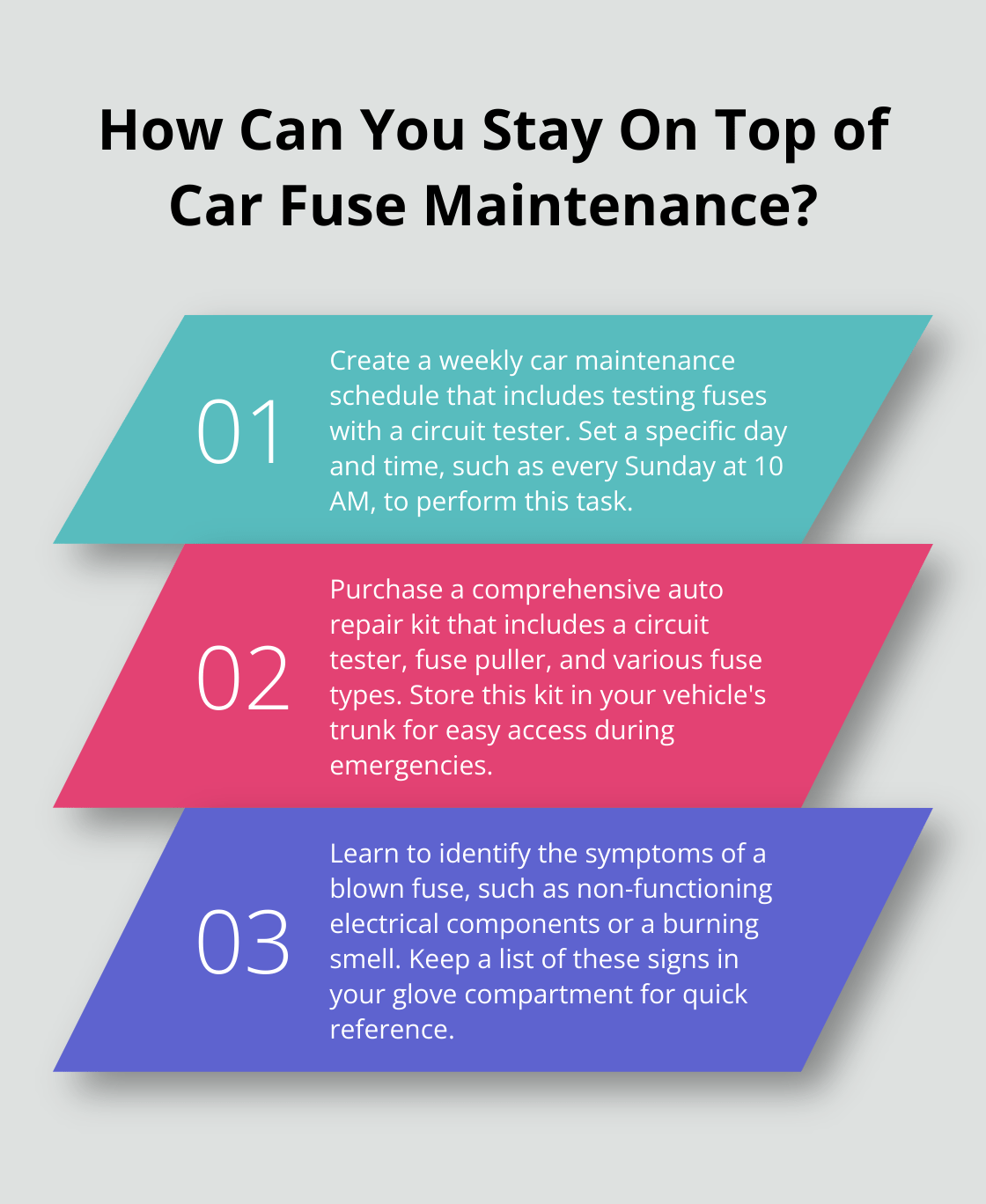At Dallian Auto Accessories, we know that understanding how to use a circuit tester on a car can save you time and money.
Car fuses play a vital role in protecting your vehicle’s electrical components. When they fail, it can lead to frustrating electrical issues.
This step-by-step guide will walk you through the process of testing car fuses with a circuit tester, helping you diagnose and solve electrical problems quickly.
Car fuse boxes protect sensitive electrical components in case of short circuits. These small devices melt when excessive current flows through them, which cuts off the circuit and prevents damage to more expensive parts. This simple yet effective mechanism has protected cars for decades.
You’ll typically encounter three main types of car fuses:
It’s important to know which type your car uses for proper replacements. The 218-Piece Professional Auto Repair Tool Kit from Dallian Auto Accessories includes a variety of fuses, which makes it easier for you to have the right replacement on hand.
You can save time and frustration by recognizing the signs of a blown fuse. Here are some common symptoms:
You should check your vehicle’s fuses regularly to prevent unexpected electrical failures. Diagnostic tools (like those offered by Dallian Auto Accessories) can help you perform these checks easily and efficiently. This ensures your car’s electrical system stays in top shape.

As we move forward, let’s explore how to prepare for testing your car’s fuses, including locating the fuse box and gathering the necessary tools.
Most cars have typically two Fuse Boxes; one located under the hood of the vehicle and the other located under the dashboard below the steering wheel. Your vehicle’s owner manual provides exact locations for these boxes.
To test your car fuses effectively, you need two primary tools:
(Both these tools are often included in comprehensive auto repair kits, making them a convenient all-in-one solution for fuse testing and replacement.)
Safety should always be your top priority when you work with your car’s electrical system. Follow these precautions:
Before you start testing, familiarize yourself with the types of fuses in your vehicle. Common types include:
(Knowing which type your car uses is crucial for proper replacements and testing procedures.)
Now that you’ve prepared for the testing process, let’s move on to the actual step-by-step guide for testing car fuses with a circuit tester.

Start by consulting your vehicle’s manual to locate the fuse box. The main fuse box is typically located under the hood, while secondary fuse panels might be inside the car, often near the dashboard or steering wheel. Once you’ve located the fuse box, remove the cover and use the diagram on the inside of the cover to find the fuse associated with the malfunctioning component.
Before testing, turn off your vehicle and remove the keys from the ignition. Take your circuit tester and connect the alligator clip to a grounding point, such as an unpainted metal surface under the dashboard. Then, touch the probe end of the tester to each of the exposed metal contacts on top of the fuse. If the tester lights up, it indicates that power flows through the fuse, meaning it functions correctly.
If the circuit tester doesn’t light up when touching both contacts, the fuse is likely blown. However, don’t rush to conclusions. Sometimes, a fuse may appear intact but still fail to conduct electricity. In these cases, use a multimeter for a more accurate reading. (A multimeter can provide more detailed diagnostics and is often included in comprehensive auto repair kits.)
If you’ve confirmed that a fuse is blown, replace it. Use a fuse puller (often included in the fuse box) to carefully remove the faulty fuse. Always replace the blown fuse with one of the same amperage rating. Using a fuse with a higher amperage can lead to electrical system damage, while a lower amperage fuse may blow immediately.

After replacing the fuse, use your circuit tester again to ensure power flows correctly. If the new fuse blows immediately, this could indicate a more serious electrical issue that requires professional attention.
Regular fuse checks can prevent unexpected electrical failures and extend the life of your vehicle’s components. Try to incorporate fuse testing into your routine maintenance schedule. (This proactive approach can save you time and money in the long run.)
Testing car fuses with a circuit tester is a straightforward process that can save you time and money. You’ll quickly identify and replace blown fuses, keeping your vehicle’s electrical system in top shape. Learning how to use a circuit tester on a car is an essential skill for any car owner.

Regular fuse checks prevent unexpected electrical failures and extend the life of your car’s components. This proactive approach saves you from potential roadside frustrations and helps you avoid costly repairs. Quality diagnostic tools and replacement fuses will keep your vehicle’s electrical system in peak condition.
At Dallian Auto Accessories, we offer a wide range of automotive products, including comprehensive auto repair kits. Our 218-Piece Professional Auto Repair Tool Kit provides everything you need to perform regular fuse checks and other essential tasks (it includes circuit testers, fuse pullers, and various fuse types). You’ll ensure a smoother, more reliable driving experience with the right tools and regular maintenance.
Leave a comment